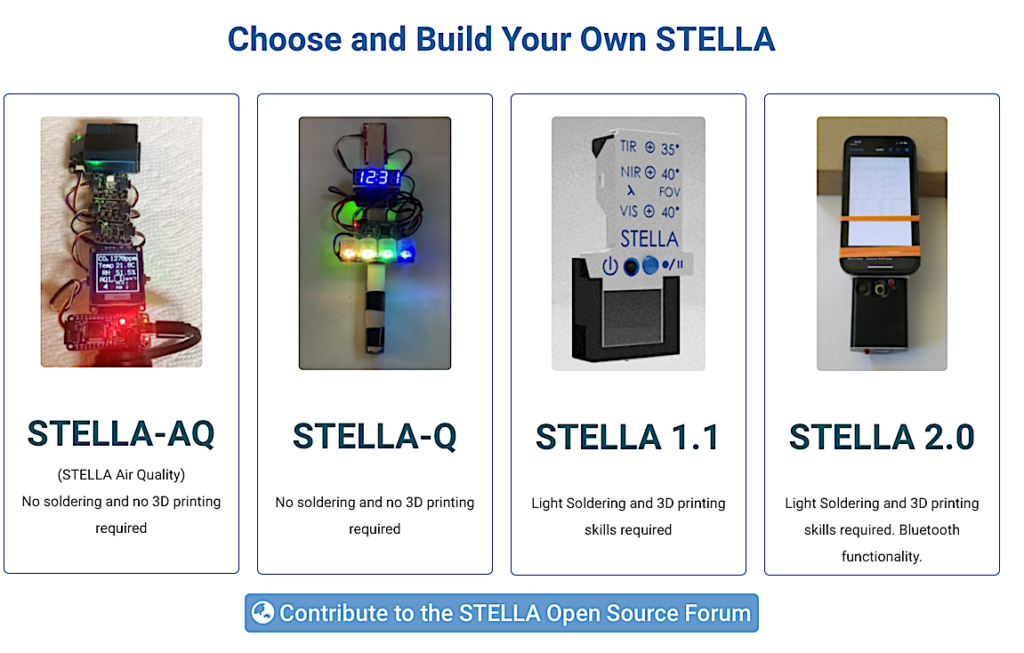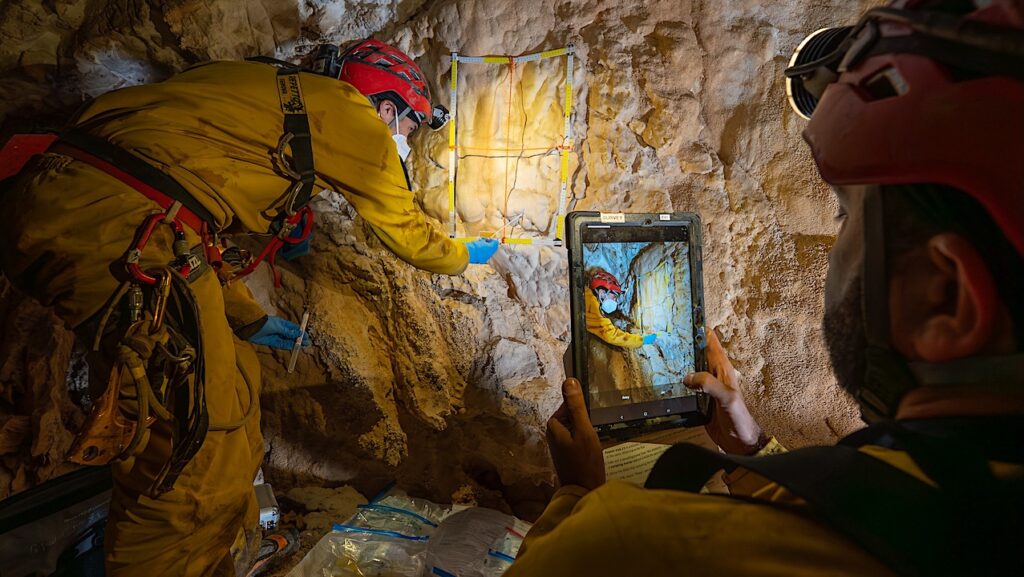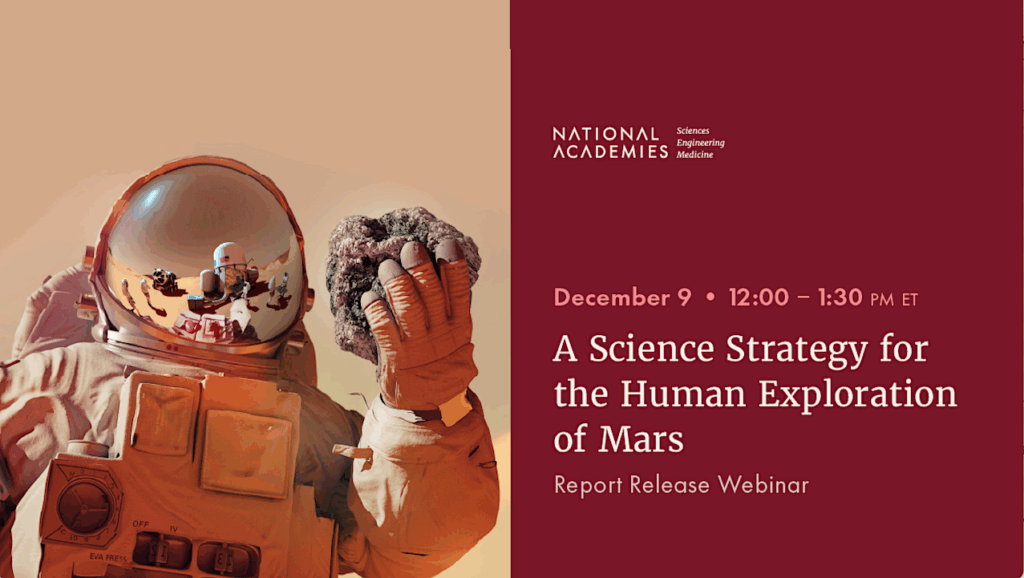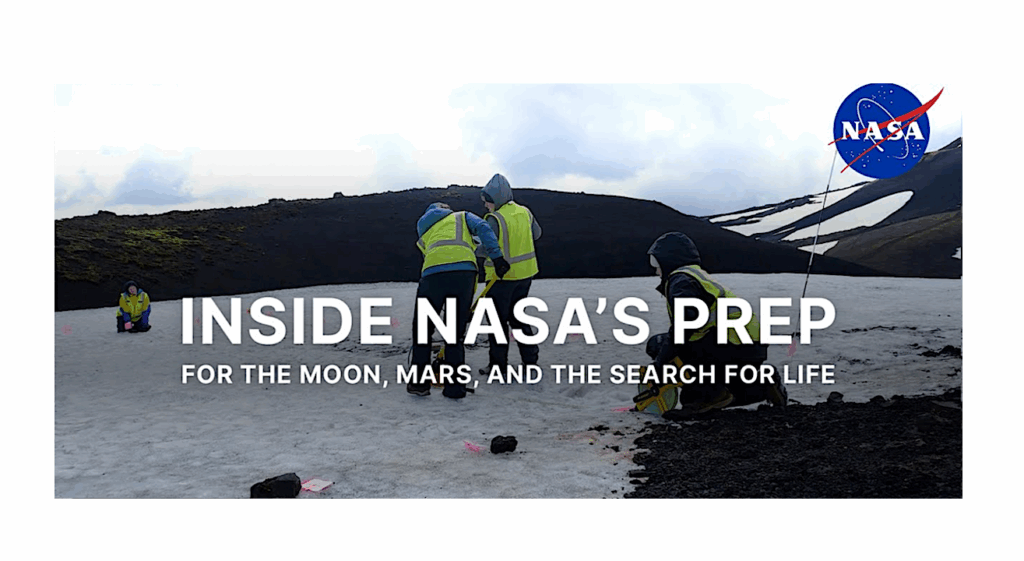Tricorder Tech: STELLA: NASA’s DIY Educational Gadget For Measuring Plant Health

On her morning walk to school, a high schooler notices a patch of greenery in her neighbor’s yard. But the plants don’t look quite as green and healthy as she thinks they should. To see if she’s right, she puts down her backpack and pulls out STELLA, a DIY gizmo not much bigger than a smartphone.
She points STELLA at the foliage and, at the press of a button, a small screen displays a numerical readout of a dozen or so measurements – things like temperature, humidity, and light intensity. Like a set of vital signs at an annual checkup, the numbers can help determine the plant’s overall health.
It may sound like Star Trek’s fictional “tricorder,” but STELLA – short for NASA’s Science and Technology Education for Land / Life Assessment – is a real tool intended for students, educators, and citizen scientists. The handheld, do-it-yourself gadget can scan, record, and analyze features of the environment, such as plant health. While not perfectly comparable to the tricorder, STELLA does exhibit some parallels to its distant sci-fi cousin.
For instance, STELLA measurements of leaf temperature and air temperature – and the difference between them – can hint at how well-watered a plant is, said Paul Mirel, chief engineer for the project. Since 2019, the Landsat science project at NASA’s Goddard Space Flight Center in Greenbelt, Maryland, has been supporting Mirel and others in the development of STELLA because it is a valuable tool to demonstrate how the imaging instruments on Landsat satellites work.
Mirel added that the instrument’s light-intensity data can offer a decent proxy for how well a plant is feeding itself through photosynthesis. Healthy plants absorb most of the visible light that hits them and reflect a large portion of near-infrared light. Unhealthy or sparse vegetation reflects more visible light and less of the near-infrared. The ratio between the two is called the NDVI – the normalized difference vegetation index.
Several NASA Earth-observing satellites can help measure NDVI at a global scale, offering valuable data to farmers and foresters assessing the health of their crops and trees, especially in times of drought and heat.

STELLA (short for NASA’s Science and Technology Education for Land / Life Assessment) is a handheld, do-it-yourself gadget that can scan, record, and analyze features of the environment, such as plant health. An example STELLA is shown here during testing at NASA’s Goddard Space Flight Center in Greenbelt, Maryland. In this test experiment, the two plants were given different amounts of water. STELLA readings were taken regularly to monitor and compare the plants’ relative health. Credits: NASA’s Goddard Space Flight Center/Sophia Rentschler
STELLA’s readouts are far more rudimentary than Landsat’s, but replacing satellites isn’t the point. What makes STELLA so valuable is “the ability to hold the instrument in your hand and make those measurements yourselves,” said Earth scientist Allison Leidner, a program manager in NASA’s Earth Science Division who has used STELLA in hands-on demonstrations with astronaut candidates. “It gives you a rough sense of what satellite data look like and how that helps us understand our Earth.”
“STELLA presents a great opportunity to integrate scholarship and education with an instrument that can give us publication-quality data on plant physiology and health at prices affordable to public schools and private individuals,” added Manuel Lerdau, an ecologist at the University of Virginia in Charlottesville. Lerdau and Mirel first conceived of STELLA in 2019 as a device functional enough to measure plant health and simple enough to be built by students.
In fact, two high school interns at NASA Goddard spent the summer of 2023 building 40 of them under the direction of Mirel and STELLA team lead Mike Taylor. Christina Ballagh worked on the circuit boards that hold all the sensors and buttons. “On average it takes two hours to make a whole STELLA,” she noted. Sabrina Pillai worked on the screens. “It’s a ton of soldering, troubleshooting, and cleaning,” she said.
Those newly assembled STELLAs will be loaned out for educational purposes. Taylor has so far mailed them to schools in 10 states, including Alaska, Nebraska, New York, and Tennessee. He has even fielded some interest from American Samoa.
Assembly directions are available freely online from NASA’s Landsat website. There are three different STELLA models, the simplest of which requires neither soldering nor 3D printing and can be taped together on a pair of tongue depressors. Parts for all three models can come in at less than $200.
“The goal here is to democratize instrumentation,” Mirel said.
There is even a STELLA GitHub public forum that offers lesson plans and best practices. Karen Karker, instructional support specialist at SUNY College of Environmental Science and Forestry, used STELLAs in a lesson on the electromagnetic spectrum and found “it’s a really great visual aide for the classroom.”
“Students can use STELLA to understand the world around them, to study the living and the built environment, and to take the steps toward changing the way we treat our planet,” Lerdau said.
Landsat is a joint NASA-U.S. Geological Survey mission that has been studying Earth’s landscapes from space since 1972.
In the STELLA group at NASA’s Goddard Space Flight Center, creator Paul Mirel and team lead Michael Taylor were joined by interns Christina Ballagh and Sabrina Pillai in summer 2023. Further contributors include Ross Walter, who created the free, online data viewer to visualize readouts; lead scientist Petya Campbell, who is assembling a public spectral library with example curves of standard materials; and Jesse Barber, who covers calibration and validation.
STELLA (Science and Technology Education for Land / Life Assessment) are do-it-yourself handheld instruments developed by Paul Mirel. Instruments for science, education, outreach, and engagement.

What do the STELLA spectrometers measure?
- Light intensity, in the visible wavelengths (in nanometers): 450, 500, 550, 570, 600, 650The visible light intensity is measured in microwatts per centimeters squared, with error bars of +/- 12% of the value. The sensor selects the specific wavelength bands by using a set of silicon thin-film interference filters, to a precision of +/- 5 nanometers. The bands are centered around the wavelengths listed above, and the bandwidth of each band is +/- 20 nanometers full-width half-maximum around the band center, in a Gaussian distribution of sensitivity. Silicon is a hard material with low thermal expansivity, so the sensor characteristics are stable over a broad temperature range, as well as over the life of the sensor. The sensor’s field of view is cone-shaped, with a cone angle of +/- 20\’ba for a total field of view of 40\’ba. The sensor is the as7262 visible spectral sensor built by ams-OSRAM, on a small circuit board built by Adafruit Industries.
- Light intensity (in microwatts per centimeters squared), in the near infrared wavelengths (in nanometers): 610, 680, 730, 760, 810, 860 The near infrared light intensity is measured in microwatts per centimeters squared, with error bars of +/- 12% of the value. The sensor selects the specific wavelength bands by using a set of silicon thin-film interference filters, to a precision of +/- 5 nanometers. The bands are centered around the wavelengths listed above, and the bandwidth of each band is +/- 10 nanometers full-width half-maximum around the band center, in a Gaussian distribution of sensitivity. Silicon is a hard material with low thermal expansivity, so the sensor characteristics are stable over a broad temperature range, as well as over the life of the sensor. The sensor’s field of view is cone-shaped, with a cone angle of +/- 20\’ba for a total field of view of 40\’ba. The sensor is the as7263 near infrared spectral sensor built by ams-OSRAM, on a small circuit board built by SparkFun Electronics.
- Surface temperature, in degrees Celsius. This sensor measures a far infrared light spectrum to produce a spectral curve. This curve is fit to a black-body thermal emission curve, to derive the surface temperature. This sensor is calibrated to objects that are emissive (not shiny metal surfaces). The temperature reading is good to +/- 0.5 \’baC. The sensor’s field of view is cone-shaped, with a cone angle of +/- 17.5\’ba, for a total field of view of 35\’ba. This sensor, chosen for a field of view that approximates that of the spectral sensors, is the MLX90614ESF-BAA built by Melexis. There are other versions of this sensor with larger fields of view.
- Air temperature, in degrees Celsius. This sensor measures the ambient air temperature to an accuracy of +/- 0.25 \’baC. It measures the semiconductor conduction-band quantum energy band-gap to derive the temperature. This method of measurement is accurate across a wide range of temperatures (-40 to +125 \’baC) and is stable over the life of the sensor. This sensor is an MCP9808, manufactured by Microchip Technologies Inc., set on a small circuit board built by Adafruit Industries.
- Ambient conditions: Relative humidity, barometric pressure, altitude, and air temperature. This sensor measures those four parameters, though the air temperature measurement is less accurate than that of the MCP9808, so we do not record this sensor’s air temperature reading. The relative humidity measurement is good to +/- 3% and the barometric pressure reading, in hectoPascals, is good to +/-1 hPa. The altitude measurement is uncalibrated, so the absolute value is not accurate. The precision of the altitude measurement is better than 0.1%, so we include it to allow data marking by altitude excursion (a quick rise and fall) if the STELLA is in use on an aerial drone. In this way, the drone data and the STELLA data can be synchronized. This is particularly helpful for gathering GPS readings from the drone to tag the spectral data from STELLA, for agricultural and ecological use. The sensor is a Bosch BME280, on a small circuit board by Adafruit Industries.
- Time. We manually set the real time clock on the STELLA to Coordinated Universal Time (UTC) to avoid confusion of time zones and daylight savings time. After we set the clock, it will continue to keep time, powered by the backup battery, even when the STELLA is off. The accuracy of this clock chip is +/- 2 seconds per day, about +/- 12 minutes per year. The real time clock chip is a PCF8523, manufactured by NXP Semiconductors, on the Adalogger data logger module built by Adafruit Industries. }
Astrobiology, Tricorder








